I have a column from a data frame (that contains a set of estimated proportions of cell counts) for which class() returns "factor" and column (that contains the actual cell counts) from another for which class() returns "numeric". As I have to plot these against one another to see if there's a relationship between them. Hence I have to convert the factor entities to numerics:
> class(proportions$Neutrophils)
[1] "factor"
> head(proportions$Neutrophils)
[1] 2.3 14.9
178 Levels: #VALUE! 0.0 0.4 0.6 0.7 0.8 0.9 1.0 1.1 1.2 1.3 1.4 1.5 1.6 1.7 1.8 1.9 ... abs neutrophils
> head(as.numeric(proportions$Neutrophils)) #notice that the numbers are completely trans
[1] 1 1 82 57 1 1
> head(as.numeric(proportions$Neutrophils))
[1] 1 1 82 57 1 1
> max(as.numeric(proportions$Neutrophils)) #factors converted to numeric
[1] 176
I have arranged the patterns of the columns in such a way that the corresponding values align:
ptr<-match(sample.details$barcode1, proportions$barcode2)
proportions<-proportions[ptr,]
I convert the factor column to numeric and plot:
plot(proportions$Neutrophils, as.numeric(SPVs[,7]), pch=19, ylab= "proportion estimates", xlab="counts", main="Neutrophils Proportions Validation")
When I don't convert it to numeric though:
plot(proportions1$Neutrophils, SPVs[,7], pch=19, ylab= "proportion estimates", xlab="counts", main="Neutrophils Proportions Validation")
What is worrying about the graphs are analogous and yet the x-axis on the second graph is not arranged in ascending order...
All I want is an estimate of whether the two columns are related but if the order is mixed up there is no way of telling this...
How do I ensure that the order of the x-axis values are ascending?

